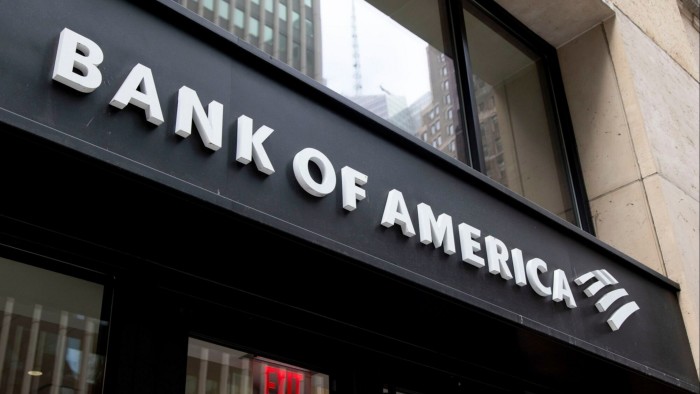Unlock the Editor’s Digest for free
Roula Khalaf, Editor of the FT, selects her favourite stories in this weekly newsletter.
Measured next to its rivals, America’s second-largest bank has been a third-rate investment. Bank of America stock is up 2 per cent over the past three years, while JPMorgan’s is up 67 per cent. Even the troubled Citigroup and Wells Fargo have fared better, rising 20 per cent and 34 per cent respectively.
If boss Brian Moynihan has his way, 2025 could well be a breakout year, thanks to the steepening yield curve. The difference between the two and 10-year Treasury yields is currently 39 basis points — around a three year high. But as its fourth-quarter earnings showed, some things weighing on the bank’s valuation might get worse before they get better.
A steeper yield curve is generally good for banks, who can borrow at lower short-term interest rates and lend at higher long-term rates. To the extent that the yield curve reflects investor expectations of sustained high interest rates, it particularly benefits lenders that have large amounts of fixed rate assets maturing each quarter.
Bank of America is one of those. It ploughed money into low-yielding Treasuries and mortgage-backed securities so much during the pandemic that its debt securities holdings doubled between 2019 and 2021, peaking at $980bn. Amid low rates that made sense: the then-1.5 per cent yield from its debt securities was far superior to the paltry 0.1 per cent yield from parking cash with central banks.
The logic flipped once the Fed started hiking rates. By March 2024, cash was yielding nearly 5.3 per cent on average while Bank of America’s debt securities yielded less than 3 per cent. Worse, the sharp run up in interest rates also resulted in massive paper losses, leaving Moynihan to becalm investors over some $112bn of unrealised losses that quarter.
The bank protested that when rates came down, that would reverse, and it did. About $20bn of its fixed-priced loans and securities are maturing each quarter, and Bank of America has been able to redeploy the money at relatively higher rates. But the recent rise in longer-term rates has proved unhelpful, in that it makes bonds fall in value – again. The bank’s unrealised losses on bonds it plans to keep until maturity, which had fallen this year, rose in the fourth quarter to $108bn.
Bank of America said on Thursday net interest income could grow by as much as 7 per cent this year, with the return of deposit and loan growth providing an additional tailwind. That compares with the 1.5 per cent increase JPMorgan is forecasting for its own interest income. Just as at Wall Street rivals, the future of dealmaking and trading looks pretty bright. But more than his large peers, Bank of America’s valuation – which currently sits at a middling 1.3 times price to book value – hinges on Moynihan’s past balance-sheet decisions – and how soon he can put them behind him.
pan.yuk@ft.com
https://www.ft.com/content/02e531e6-bbf0-455e-a34a-5fc3fbe8834e


